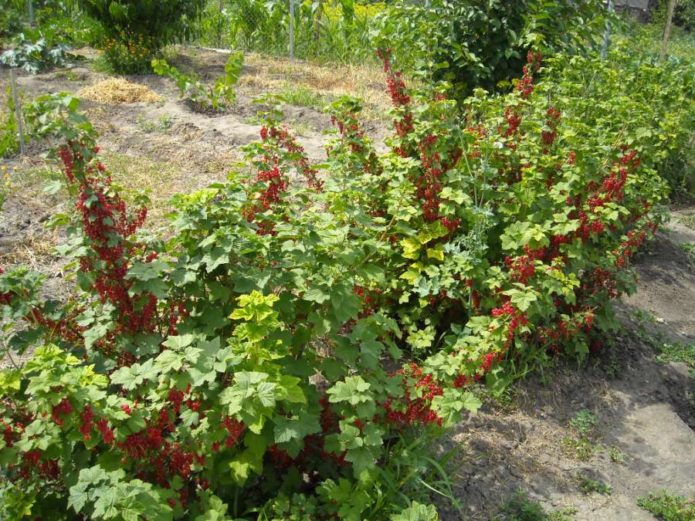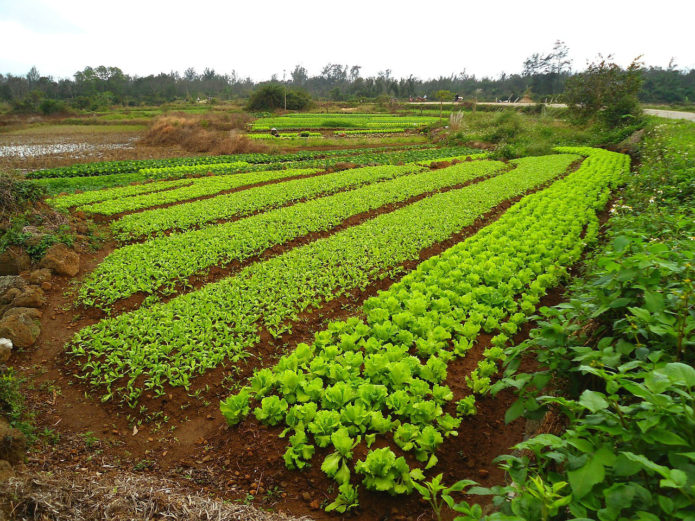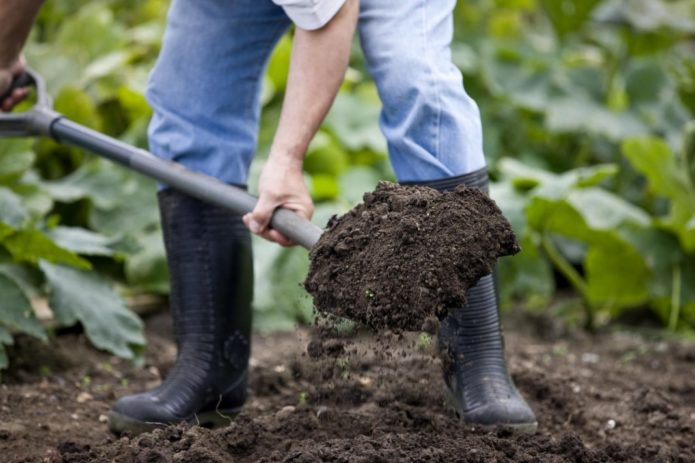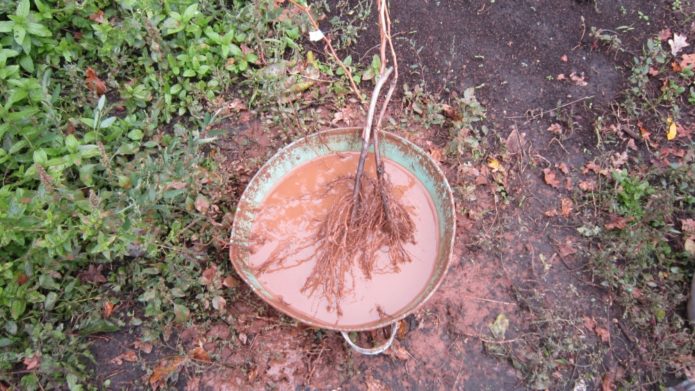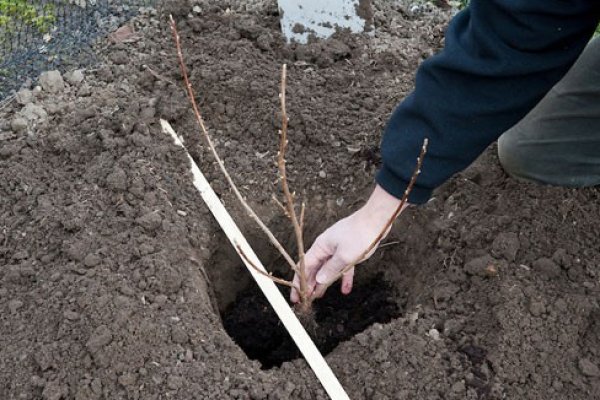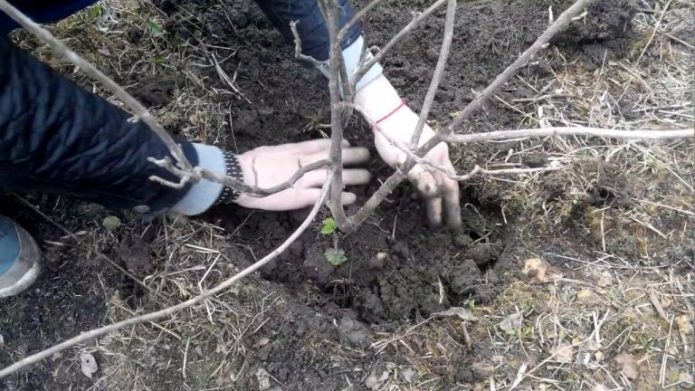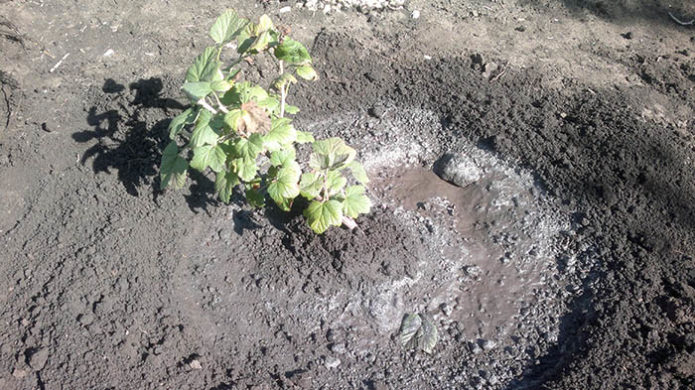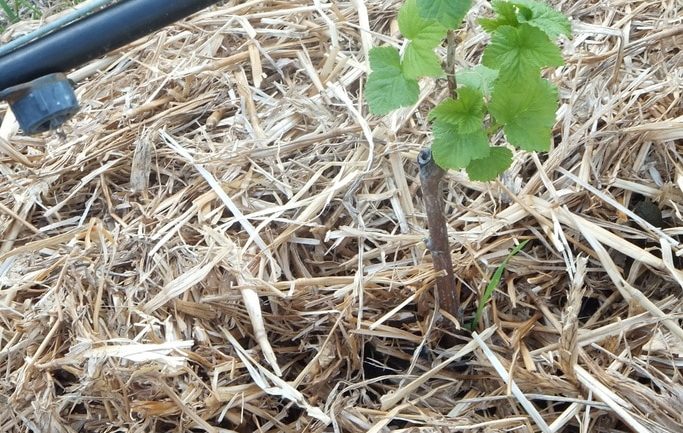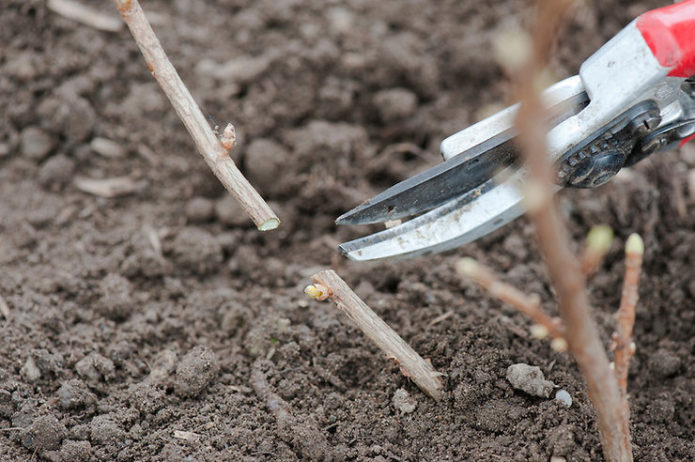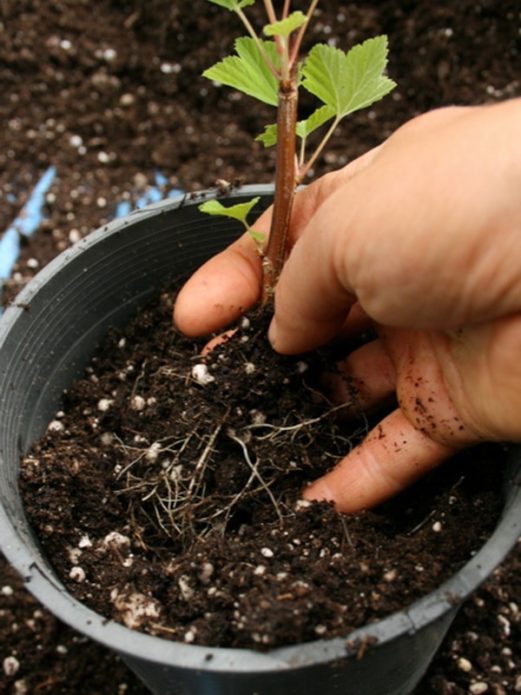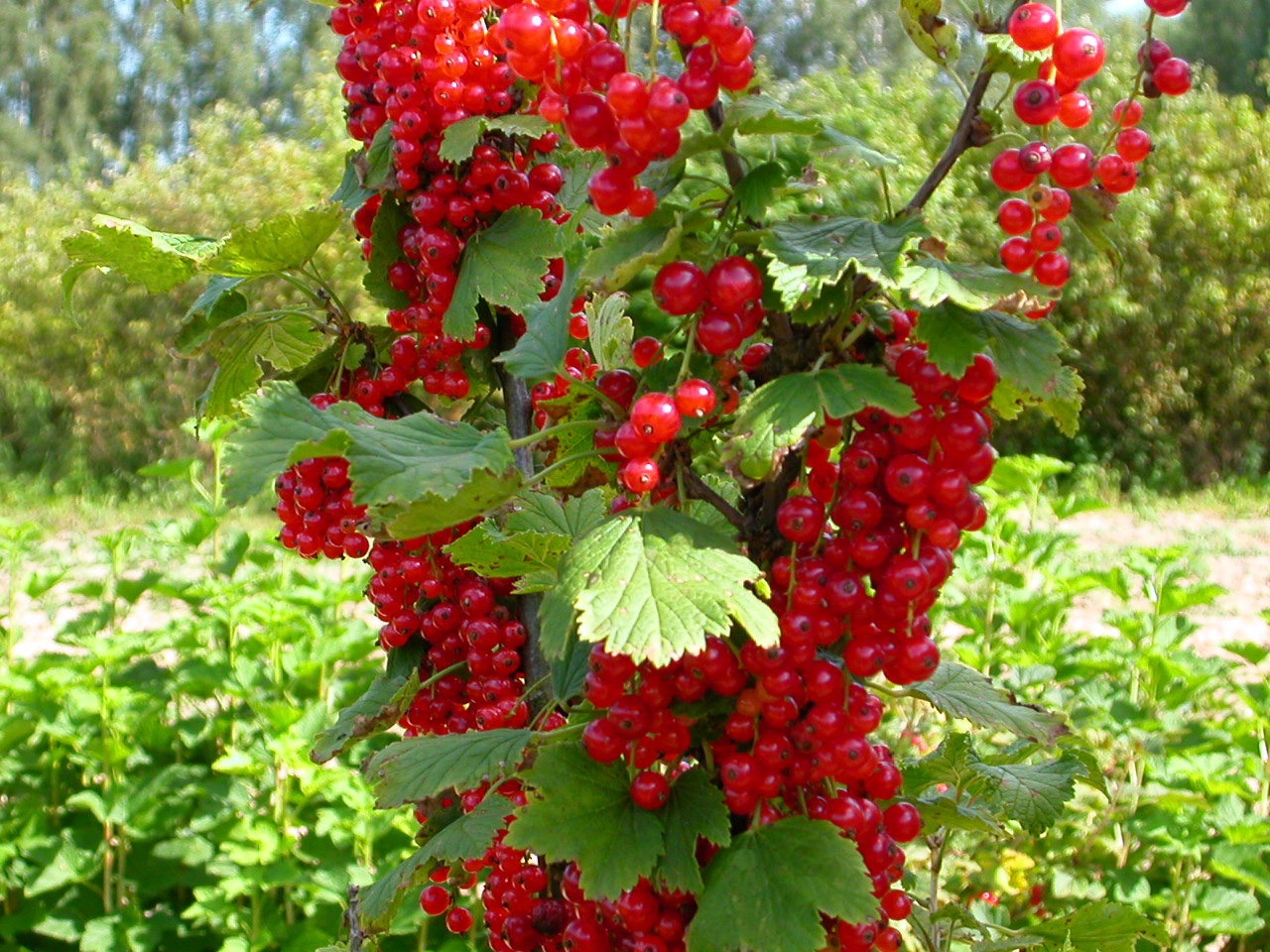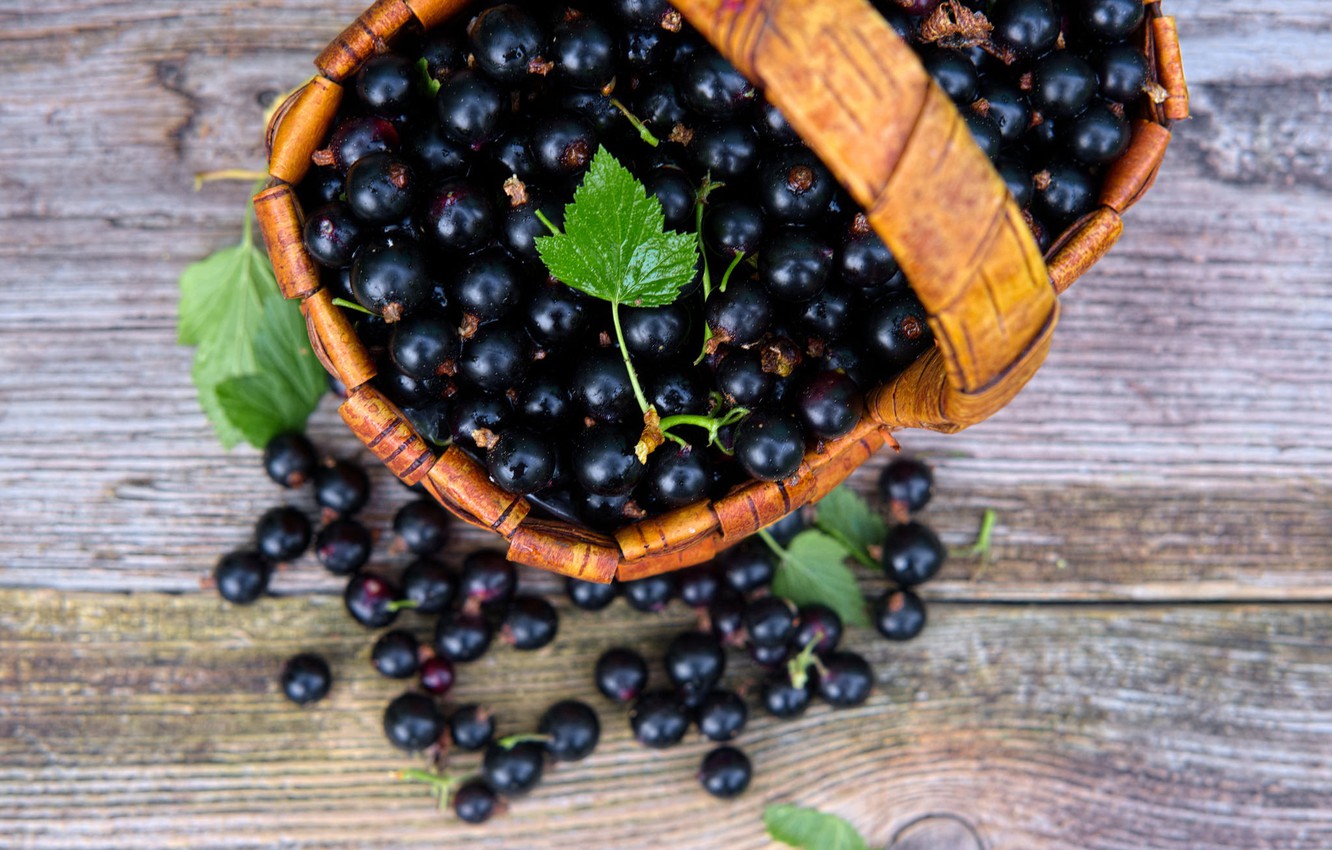Red currants are considered less useful than black currants, but they are equally popular and are grown in almost every garden. It is not difficult to plant it, but you need to do it on time, choosing a place for planting in advance and carefully preparing it.
Content
Red currant planting technology
The technique of planting varieties of currants is almost the same, but the addictions of black and red currants to water, light and nutrition are not exactly the same. For example, red currant bushes are higher, but they are less distributed to the sides, which is why they are planted a little denser.
Choosing a landing site
With good care, red currants normally bear fruit up to 25 years, so the choice of the location of the bush must be approached responsibly. So, if you plant it in the shade of trees, the yield will drop sharply, and the berries will gain less sugar. However, she also needs protection from the winds, so a low fence nearby will come in handy. Soils are suitable for both loamy and sandy loam, with a neutral or slightly acidic reaction. Waterlogging, including due to closely passing underground waters, should be excluded.
Not all neighbors are suitable for red currants. Black currants are not planted nearby, since they have different requirements for humidity and light. Red currants coexist with gooseberries normally, but have the same pests. Crops that produce a lot of growth (raspberries, cherries, plums) should not be nearby.
The predecessors of red currants can be almost any, only gooseberries and raspberries are not suitable. The best are annual grasses and grains.
For some reason, red currants are considered not as useful as black ones, but at least one of its bush tries to plant every gardener:https://flowers.bigbadmole.com/en/yagody/smorodina/krasnaya-smorodina-rannyaya-sladkaya-opisanie-sorta.html
Preparing the soil for planting
If it was not possible to sow siderates (herbs that heal the soil well), the site must still be dug deep in advance, removing all rhizomes of weeds, especially perennial ones. At the same time, a bucket of humus, 100-120 g of superphosphate and a handful of ash per 1 m2, and in the case of acidic soils and deoxidizers (hydrated lime, chalk).
A landing hole is dug in advance. The technique of its preparation is usual: the infertile soil layer is removed, and the top layer is mixed with fertilizers and poured back. A pit for red currants is prepared a little more than for black: 50-60 cm both in diameter and in depth. On poor soils (stony, clay, sandy), it is made even more in order to put more nutrients in it.
Fertilizers applied at planting
Fresh manure cannot be used for currants.Fertilizers placed in the pit are 2–3 buckets of humus or good compost, 150–200 g of superphosphate and a large handful of ash. You can take complex fertilizers, the dosage is according to the instructions on the package.
Landing time and scheme
All kinds of currants are planted in spring and autumn, and seedlings in containers even in summer. Spring planting of ordinary seedlings is possible only before bud break. In red currants, this process begins later than in black ones, so you can catch the time. It is necessary that the ground has already thawed, and the seedling does not wake up. In most areas this happens in April. More correct plant currants in autumn: the soil is easier to work with and much more time to work. You just need to finish planting a month before the cold weather, that is, usually during September.
If more than one bush is planted, about one and a half meters (minimum 1.25 m) are left between them, between the rows - 2-2.5 m.
Video: planting a seedling with a closed root system
Landing technique
So, summing up, we see that the landing consists of the following steps.
- In advance, they dig up the selected area with the removal of weeds and dig a planting hole (at least 50 x 50 x 50 cm) using the recommended doses of fertilizers.
- Before planting, the shoots on the seedling are shortened, the damaged roots are removed, the roots are dipped in a chatterbox made of clay and mullein.
- A part of the soil is removed from the pit, the seedling is placed in the pit obliquely, deepening the root collar by 6-7 cm, the roots are straightened.
- The roots are covered with the removed fertile soil, trying not to leave air pockets, and the soil is compacted. Pour half a bucket of water under the bush.
- They add the required amount of soil, form the sides around the pit, water more so that the water stops quickly absorbing.
- Mulch the soil with a thin layer of any loose material.
Caring for red currants in the first time after planting
At first, the seedling is watered often, preventing the soil from drying out, especially in spring. The established bushes are rarely watered: red currants are quite drought-resistant. If it rains from time to time, watering is needed only before flowering and at the very beginning of berry growth. The soil should be kept in a loose and clean, weed-free condition.
Currants, like other berry bushes, need pruning. The novice gardener cuts all the plants according to the principle: the sick and the weak are down, and let the rest grow. But when the bush is more than three years old, you have to cut out healthy, strong branches in order to avoid thickening:https://flowers.bigbadmole.com/en/yagody/smorodina/obrezka-smorodinyi-vesnoy.html
A layer of mulch of several centimeters usually eliminates loosening and prevents many weeds from germinating.
Top dressing of the planted bushes will be required only after two years. But cropping is needed right away. Some gardeners recommend cutting off the entire aerial part immediately after planting. It is usually a pity to do this, therefore, as a rule, two buds are left on shoots of equal strength, or, if there are weak ones, they are cut out, and 2-3 buds are left on the strong ones. In the future, within 5–7 years, only the weakest and most damaged branches can be cut. Preventive spraying with Bordeaux liquid, as a rule, begins from the 2nd year.
Differences in spring and autumn planting of red currants
The operations when planting red currants in both spring and autumn are generally the same, but in the fall, the work is easier. There is enough time to prepare the pit, all operations can be performed more carefully.For the spring planting of currants, the pit must be prepared in the fall, since in the spring it is physically difficult to do it, and there is no time: if the buds began to open, it is better not to risk it and postpone planting until autumn.
In the fall, you can get much more valuable planting material: in the spring, leftovers not sold in the fall are often sold.
In spring, the soil dries quickly, so you need to carefully monitor its condition and water the bushes more often. If the planting was carried out in the fall, it happens that there is enough rain. But before the onset of cold weather, mulch is added under the bush, and in cold regions they spud it with earth and wrap it in spunbond. Indeed, in 1-2 months the seedling already has time to settle in a new place, but the roots are still weak, they do not have time to grow to the required length.
With the onset of spring, the shelter must be removed in time!
The simplest thing is to buy seedlings in containers. They are considerably more expensive, but they can be planted at any time except on the hottest days. Such seedlings are simply shaken out gently with a clod of earth and planted "as is", almost not deepening in relation to how they grew in the container. But they, in the case of an autumn planting, must be insulated before frost.
How to choose and plant currant seedlings correctly:https://flowers.bigbadmole.com/en/yagody/smorodina/posadka-smorodinyi-vesnoy-sazhentsami.html
Video: planting red currants
Features of propagation of red currant cuttings
Planting with lignified cuttings is one of the simplest breeding techniques for all types of currants. The survival rate of cuttings in the case of black currant is close to 90%, red - worse. Cuttings of red currants are harvested and planted earlier than black ones. They are taken from the top of the strong, healthy shoots of this year at the very end of summer or in the first half of September. They should be about 20 cm long, 6–8 mm thick, and 5–6 buds. The leaves are immediately cut off. Above the upper kidney, the cut is straight, above the lower one - oblique, 2–2.5 cm from it.
The cuttings are immediately planted in loose, fertile soil at an angle of 45about... Only one upper kidney is left above the ground, the second is located at the very surface. Until the end of autumn, the cuttings are periodically watered. As a rule, good seedlings are formed from them by the next fall.
If you plant red currants in fertilized soil in a lighted area in a timely manner and correctly, it will bear fruit for more than 20 years. Landing is a simple matter, some of the nuances were mentioned in this article.
